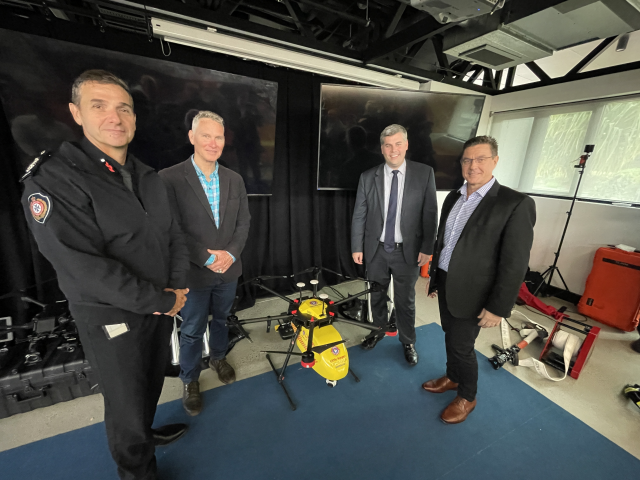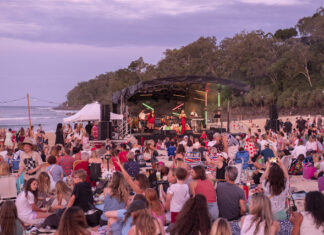
Drones, fuel moisture sensors, robots and AI cameras are just some of the technology to be put to the test in the trial phase of Council’s Firetech Connect program.
Developed by the Peregian Digital Hub in the wake of the 2019 bushfires, Firetech has brought together tech companies, Council and QFES with the goal of boosting bushfire resilience.
Queensland Fire and Emergency Services Minister Mark Ryan joined Acting Noosa Mayor Frank Wilkie and Digital Hub Director Chris Boden today to seal the partnership that will trial a range of technologies to predict, detect, track and fight bushfires.
“This partnership aims to boost Noosa’s bushfire resilience and that of other council areas, as well as arm fire authorities with innovative, new fire-fighting tools,” Cr Wilkie said.
QFES Deputy Commissioner Mike Wassing said the partnership brings together industry expertise to build capability both within QFES and the community.
“As the climate changes we can expect more severe bushfire seasons and innovations such as this partnership ensure we can keep on the front foot,” he said.
“QFES subject matter experts (SMEs) in bushfire prediction will work alongside Firetech experts to explore ways to provide greater accuracy when managing bushfire disasters.”
Digital Hub Director, Chris Boden, said the trial would look to prove the effectiveness of a range of technologies so that QFES and Australian councils could deploy them with confidence.
Establishing a “living lab” – an area of bushland to field-test technology – was crucial to the pilot trial phase.
“With federal funding we’ve been able to establish a site. There we will be able to test predictive technologies such as sensors that collect environmental data about soil moisture, fuel loads and weather conditions to help determine the likelihood of fire occurring at a particular place and time,” Mr Boden said.
“We’ll test cameras with artificial intelligence to detect bushfire smoke and distinguish it from barbecue smoke or smog.”
The third area of the trial involves use of drones to improve situational awareness during a fire, Mr Boden said.
“If you think back to the Peregian fires, hundreds of people were evacuated and for 72 hours there was no clear idea of what damage was done.
“By deploying drones to survey the area we would have been able to dispel misinformation circulating on social media about the extent of the damage.
“Current regulations don’t permit drones over a bushfire so we will be looking at how we overcome that issue in one of our upcoming trials.”
Mr Wassing said investigations into uncrewed firefighting solutions would look to keep firefighters out of high-risk situations and free up resources for more strategic placement.
Firetech Connect was born out of conversations that followed the 2019 fires.
“From the conversations we had with firefighters, councillors and the community in the days and weeks that followed the Peregian fires it struck us that while we are making the most of advancing technologies in many areas, bushfire resilience was lagging,” Mr Boden said.
“We started to look at the contribution we could make using the resources of the Digital Hub to help boost our bushfire resilience – something that’s close to all of our hearts in Peregian.”
The Digital Hub and Council’s Disaster Resilience team have spent the past two years laying the ground work – formulating relationships with QFES and assembling a panel of global tech companies so the trial phase can begin.
An expansion of the Digital Hub into the old Community House – which served as a recovery centre after the 2019 fires – will provide a data centre to support the pilot trials.
“This is an exciting next step and we’re thrilled to have the support of QFES, the Queensland Government, Council and a panel of leading tech companies to begin this exciting next phase of Firetech,” Mr Boden said.






